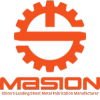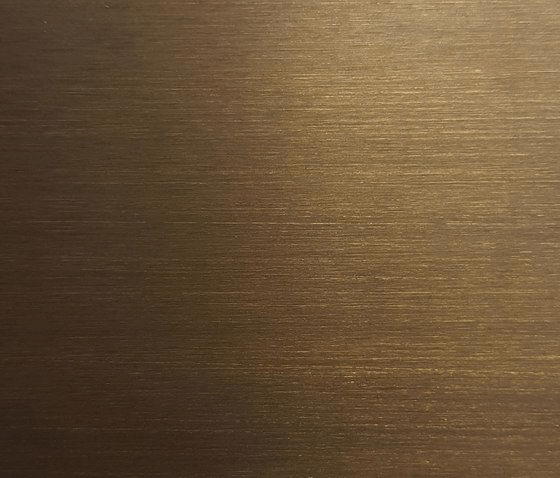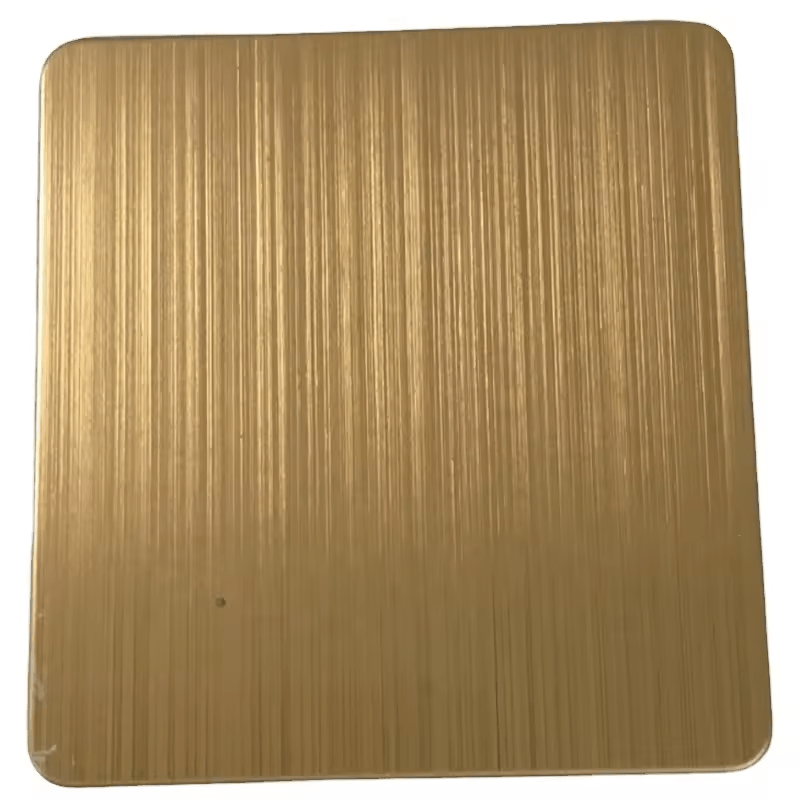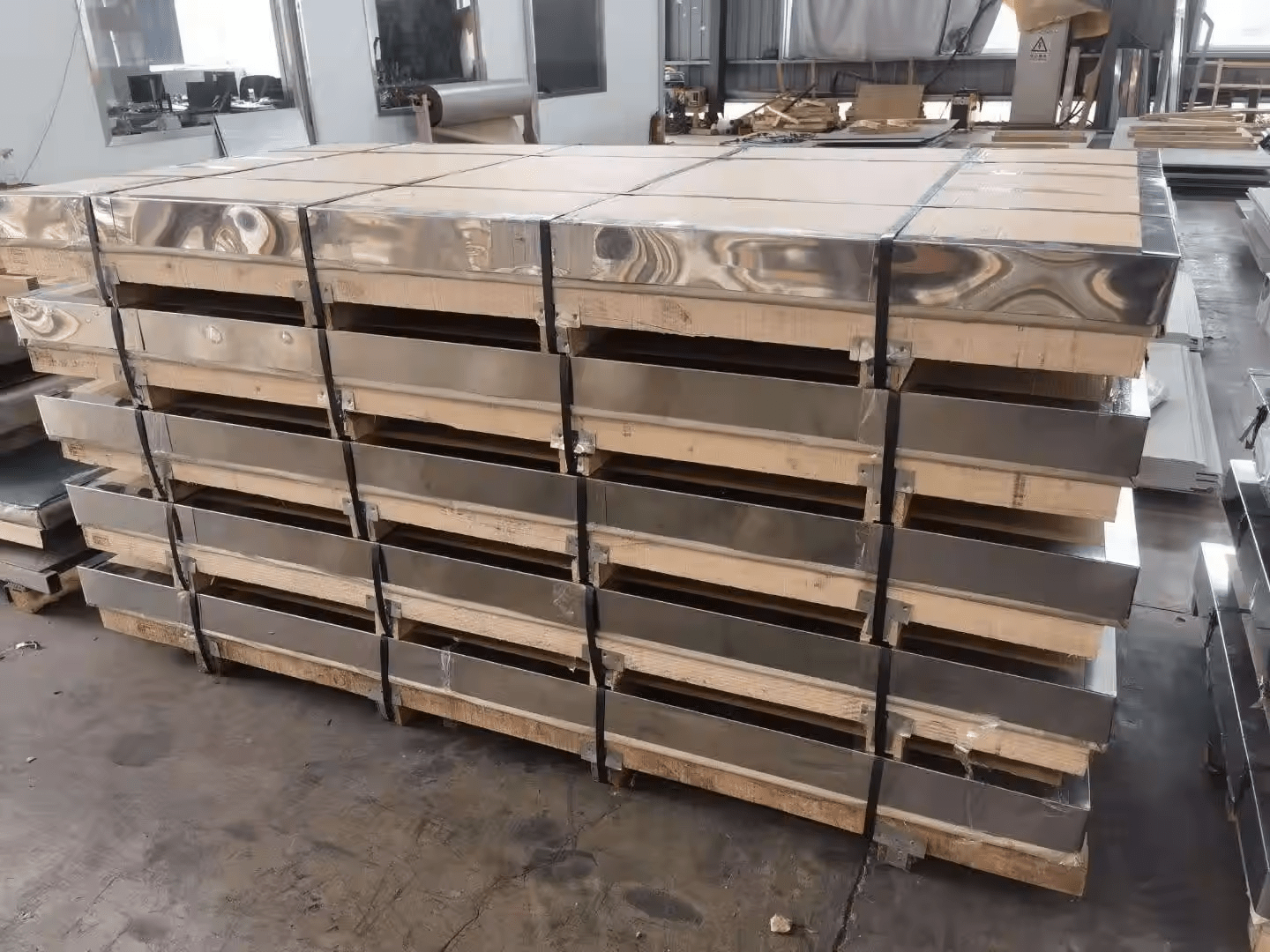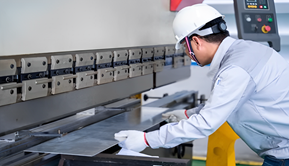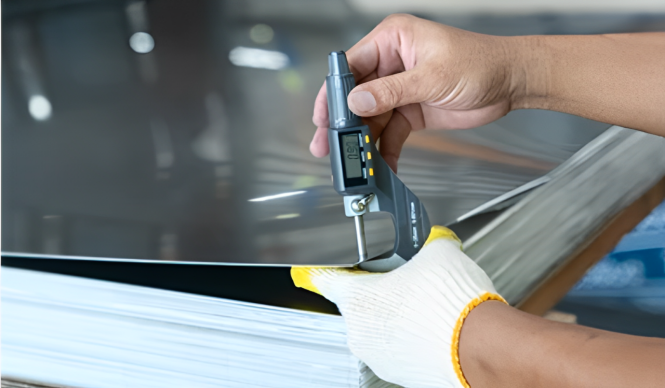An Ultimate Guide To Bronze Sheets
Since the old eras, bronze, made from copper and tin, has been a foundation for human experiences. Due to its distinctive combination of durability, corrosion resistance, and aesthetic appeal, it is preferred in various industries, including art. A wide range of applications, including decorative items and architectural components, can be carried out with bronze sheets. An in-depth look at the properties, types, applications, and maintenance of bronze sheets is the goal of this definitive guide. Whether you are an architect, a metalworker, or a bronze fan, this guide will teach you how to use bronze sheets creatively and effectively.
Table of Contents
ToggleProperties of Bronze Sheets
Bronze sheets are exceptionally pursued for various applications because of their interesting blend of properties.
Toughness and Strength
The solidity and durability of bronze sheets make them distinctive. Coming up next is a distinct depiction of the primary properties: The blend of the compound, fundamentally copper and tin, gives it an extreme arrangement that can endure a ton of mileage. Accordingly, applications, such as present-day and plan parts that require strength and life span benefit extraordinarily from utilizing bronze sheets. Thanks to their high flexibility, they can stay aware of their shape and fairness under profound loads and stress.
Corrosion Resistance
One of the bronze sheets’ most distinctive characteristics is its remarkable corrosion resistance. Unlike many other metals, bronze develops a defensive patina when exposed to air. This patina prevents further oxidation and degradation by acting as an obstruction. In marine applications and outside figures, where saturation, created materials, or saltwater are reliably present, this quality is particularly valuable.
Thermal and Electrical Conductivity
Copper sheets have a higher warm and electrical conductivity than copper in their pure construction. Due to this property, they are suitable for electrical and heat-exchanging applications. Bronze sheets are perfect for cookware and warming structure parts due to their high heat conductivity. In the interim, although their electrical conductivity is not quite as high as copper’s, it is sufficient for unambiguous electrical connectors and parts.
Aesthetic Appeal
Additionally, bronze sheets possess a lot of sleek appeal. They come in a warm, earthy, rosy color that can be polished to a high sheen or left to naturally patina for a more aged appearance. Due to their aesthetic adaptability, bronze sheets are frequently used in accents, interior design, and brightening expressions. Craftspeople and designers have many options because bronze can be patinated in a variety of colors.
Workability
Bronze sheets are appropriate for a variety of assembling procedures. They can be cut, welded, machined, and shaped into confusing shapes without losing their fundamental honesty. This workability is necessary for producing intricate designs and components, whether in intricate artistic creations or large-scale industrial manufacturing.
Non-Igniting and Low Erosion:
Bronze’s non-starting property is a significant well-being highlight where flashes could touch off combustible gases or fumes, like mining or compound handling offices. Additionally, the low friction coefficients of bronze sheets make them ideal for use in bearings and bushings, where reducing friction and wear is crucial.
Types of Bronze Sheets
There are many different kinds of bronze sheets, each made to fit a specific application and perform well. Most of the differences between these types are caused by alloy composition variations, which impart distinct characteristics and properties.
Phosphor Bronze Sheets
Phosphor bronze sheets are well-known for their resilience, fatigue resistance, and fine-grain structure. They are the most widely recognized sort of bronze sheet. Phosphorus normally makes up somewhere between 0.01% and 0.35%, while in ordinarily makes up somewhere in the range of 0.5 and 11%. Phosphor bronze’s wear resistance and stiffness are enhanced by adding phosphorus, making it suitable for bearing strips, electrical connectors, and springs. Additionally, because of its high fatigue resistance, it is suitable for components under constant stress.
Aluminum Bronze Sheets
Alongside a modest quantity of iron and nickel, aluminum bronze sheets contain roughly 6-12% aluminum. This composition provides superior strength and the capacity to withstand high temperatures. Aluminum bronze is particularly useful in marine environments due to its resistance to saltwater corrosion. It is frequently used in shipbuilding, aerospace components, and industrial machinery for applications requiring extreme durability and strength.
Silicon Bronze Sheets
Silicon bronze sheets made up of about 96% copper and 2% silicon, have good mechanical properties and are corrosion-resistant. They are popular in applications requiring a combination of toughness, durability, and disintegration resistance and are simple to weld. Silicon bronze is often used to build marine hardware, pump and valve parts, and chemical processing equipment.
Bronze-Manganese Sheets
Bronze-Manganese Sheets: Copper, zinc, and manganese make up between 60% and 40% of manganese bronze sheets. This alloy withstands wear and deformation with remarkable durability and strength. Gears, water-driven components, and uncompromising direction are just a few examples of high-stress and high-burden applications for it. Due to its ability to withstand significant mechanical pressure, manganese bronze plays an important role in contemporary and marine applications.
Nickel Bronze Sheets
Nickel bronze sheets, which are 90% copper and 10% nickel, resist corrosion well, especially in seawater and environments containing industrial chemicals. They are also tough and adaptable. Nickel bronze is frequently used in marine applications, chemical processing, and the production of coins and medals due to its durability and aesthetic appeal.
Leaded Bronze Sheets
Leaded bronze sheets have a small amount of lead in them, which makes them easier to work with but doesn’t really make them stronger or prevent erosion. Because of this, led bronze is a great material for making intricate components like bearings, valve guides, and bushings. The ease of machining also makes it possible to produce intricate parts precisely and efficiently.
Manganese Bronze Sheet
Compounds made of manganese bronze contain 60 to 68 percent copper, 25 percent zinc, 3.0-7.5 percent aluminum, 2.5 to 5% manganese, and 2.0 to 4% iron. These compounds are extremely durable and resistant to wear. Despite its machining difficulty, it is a popular choice in the oil and gas, aerospace, and marine industries due to its impressive fatigue strength of 170 MPa and tensile yield strength of 460 MPa. Welding poles, gears, latches, slow-speed weighty burden direction, cams, and landing gear parts are instances of their utilization. Despite its price and difficulty in production, manganese bronze is important for basic applications due to its durability and long lifespan.
Different Grades of Bronze Sheets
C220 Commercial Bronze (90-10 Bronze)
C220 business bronze, generally called 90-10 Bronze, consists of 90% copper and 10% zinc. This grade is valued due to its exceptional formability, resistance to consumption, and overall strength. Because of its appealing appearance, it is a famous choice for compositional components and equipment enhancement. It is suitable for electrical connectors and other applications where aesthetic and functional properties are equally important due to its excellent electrical conductivity and ease of fabrication.
C510 Phosphor Bronze (5% A)
C510 Phosphor Bronze is known for its hardness, excellent wear resistance, and high fatigue resistance. Copper makes up 94.8 percent of the material, tin makes up 5%, and phosphorus makes up 0.2%. Due to these properties, it is ideal for electrical connectors, latches, and springs. The expansion of phosphorus works on the composite’s solidarity and protection from disintegration, making it appropriate for parts exposed to rehashed pressure and requiring long-haul sturdiness.
C544 Phosphor Bronze (4% A
Copper, tin, zinc, and 0.25 percent phosphorus make up 91.5 percent of C544 Phosphor Bronze (4% A). It is extremely durable, machinable, and corrosion-resistant. Gears, bearings, and bushings frequently use this grade. The zinc content makes it easier to machine, making it possible to precisely produce intricate parts that need to keep their integrity even under mechanical stress.
C614 Aluminum Bronze
C614 Aluminum Bronze is composed of 91% copper, 7% aluminum, and 2% iron. Due to its durability, inertness, and resistance to wear, this grade is utilized in numerous marine equipment, siphons, and valves. Because it can survive in seawater that is disintegrating, it is ideal for marine environments because it ensures strength and a long life span in harsh environments.
C630 Nickel Aluminum Bronze
C630 Nickel Aluminum Bronze components comprise of 80% copper, 10% aluminum, 5% nickel, and 4% iron. This alloy is suitable for heavy-duty industrial applications like gears, bearings, and bushings due to its exceptional strength, resistance to corrosion, and high wear resistance. The combination of nickel and aluminum makes it look better in difficult conditions and gives it reliable support in crazy situations.
C655 Silicon Bronze
Due to its 97% copper and 3% silicon composition, the C655 Silicon Bronze is strong, resistant to corrosion, and straightforward to weld. Electrical components, chemical processing equipment, and marine hardware frequently use this grade. The combination’s silicon content works on its mechanical properties and consumption obstruction, making it reasonable for many requesting applications.
C675 Manganese Bronze
Zinc makes up 40% of the C675 Manganese Bronze, while manganese, iron, and aluminum are available in follow sums. Sixty percent of the bronze is copper. This grade is notable for its high elasticity, moderate erosion obstruction, and wear opposition. It is frequently found in gears, heavy-duty bearings, and hydraulic parts. It is useful in industrial applications where durability is important because it can withstand significant mechanical stress.
C932 Bearing Bronze
C932 Bearing Bronze, also known as SAE 660, is made up of 83 percent copper, 7 percent tin, 7 percent lead, and 3 percent zinc. It is extremely machinable, has a high load-carrying limit, and extremely wear-resistant. Heading, push washers, and bushings are all well-suited for this grade. Because of its simpler to-machine lead content, it is reasonable for the development of exact parts that should work really and keep going for quite a while.
C954 Aluminum Bronze
C954 aluminum bronze is made out of 85% copper, 10% aluminum, 4% iron, and 1 percent manganese. This composite is notable for its prevalent consumption obstruction, wear opposition, and strength. It is utilized frequently by marine equipment, siphon parts, and high-strength latches. The durability and endurance of C954 Aluminum Bronze make it an excellent choice for applications requiring strong execution and life expectancy.
Thickness of Bronze Sheets
Bronze sheets are accessible in many thicknesses to take care of various applications and necessities. A bronze sheet’s properties and suitability for multiple applications can be significantly affected by its thickness. The most common thicknesses and their applications are outlined below:
Thin Bronze Sheets (0.1mm to 1mm)
Bronze Sheets with Thicknesses Between 0.1 and 1 Millimeters Bronze sheets with thicknesses between 0.1 and 1 millimeter are adaptable and simple to work with. These sheets are frequently used in intricate metalwork, decorative arts, and sculpture. Due to their malleability, they are ideal for applications requiring high precision and fine detail. Thin bronze sheets are also used to make musical instruments, electronic components, and tubing with thin walls.
Bronze Sheets with a Medium Thickness (1 to 5 mm)
Bronze Sheets with Medium Thickness (1 to 5 mm) Bronze sheets of medium thickness, between 1 mm and 5 mm, work out some kind of harmony between strength and adaptability. These sheets are frequently used in architectural elements like panels, cladding, and decorative trim. Because of their consumption opposition and sturdiness, they are additionally appropriate for the creation of machine parts, marine equipment, and electrical connectors. While still useful for various manufacturing processes, the medium thickness provides sufficient underlying uprightness.
Bronze Sheets with Thicknesses Between 5 and 10
Bronze Sheets with Thicknesses Somewhere in the range of 5 and 10 mm Solid and offering a ton of unbending nature and strength, bronze sheets with thicknesses somewhere in the range of 5 and 10 mm. These sheets are utilized for everything from weighty marine gear and basic platforms to current mechanical assembly parts. Because of their expanded burden-bearing limit and solidness, they are great for conditions where the material should endure huge mechanical pressure and wear.
Bronze Sheets with Extra Thickness (10mm and Up)
Bronze sheets with additional thickness — those with a thickness more noteworthy than 10mm — are planned for the most requested applications. These sheets are used in big parts, big hardware, and modern equipment that needs to be really strong and durable. Additionally, they are utilized in the creation of enormous sculptures and monuments. The significant thickness guarantees the greatest strength and life span, even in outrageous conditions.
Applications of Bronze Sheets
Bronze sheets are used in a lot of industries because of their excellent mechanical properties and corrosion resistance. An inside and out gander at their different purposes is as follows:
Architectural and Decorative Applications
Cladding, outsides, materials, and lighting-up sheets made of bronze sheets are ordinary design parts. They are ideal for both contemporary and traditional plans due to their strength and elegant appearance. Fashioners utilize bronze sheets for inside parts, such as wall covers, furniture highlights, step railings, and lighting foundations. Insides are given a touch of class and complexity by the warm variety and ability to typically patina. Artists frequently use bronze sheets to create intricate metalwork, sculptures, and monuments. In imaginative applications, the material’s flexibility and ability to hold fine subtleties are particularly esteemed.
Marine and Nautical Uses
Bronze sheets are used to make marine hardware like propellers, shafts, bearings, and fittings because they are very resistant to corrosion in seawater. Bronze is used to make boat frames, falls, and other essential parts. Its durability ensures a durable execution in harsh marine conditions. Bronze sheets are additionally utilized on oil rigs and seaward stages to forestall erosion in parts that are in the marine climate. Bronze sheets are utilized to make gears, bushings, direction, and different parts for modern apparatus. Their durability and protection from decay are fundamental in conditions including a ton of stress. Bronze sheets are used to make siphons, valves, and various parts that ought to be persevering and impenetrable to disintegration in organizations like oil and gas.
Due to its high frictional properties, bronze is a decent decision for parts of water-fueled equipment like chambers, chambers, and guide plates. Due to their mechanical flexibility and high electrical conductivity, bronze sheets make contact springs, electrical connectors, and terminals. Bronze is reasonable for switches, moves, and other electrical parts that must perform above and beyond time because of its solidness and low utilization. To prepare for electromagnetic obstruction and guarantee proficient electrical execution, conductive strips, and protective parts in electronic gadgets are made of slim bronze sheets.
Automotive and Aerospace Components:
Bronze sheets are used to make bearings, bushings, gear parts, and other automotive components. Vehicle parts should be solid and wear-impervious to be dependable. Bronze sheets are also used in the aerospace industry for structural parts and landing gear that need to be strong, long-lasting, and resistant to harsh environments.
Finishes for Bronze Sheets
To enhance their durability, aesthetic appeal, and suitability for a wide range of applications, bronze sheets can be finished in a variety of ways. The choice of finish can significantly impact the bronze’s appearance and performance, enabling it to meet unambiguous arrangement and useful requirements. The following are typical finishes for bronze sheets:
Polish Finish
Bronze sheets have a magnificent, clever surface thanks to a perfect completion, drawing out the material’s standard greatness and shade. Cleaning the surface until it is smooth and reflexive is critical to achieve a perfect completion. Right when an extreme and refined appearance is needed, this finish is notable for further developing applications like jewels, inside plan parts, and first-in-class compositional features. Regardless, in light of the fact that cleaned bronze will undoubtedly show fingerprints and scratches, it should be kept up without fail to keep its faultless appearance.
Brushed Look
A matte, finished surface with a brushed finish makes the normal grain of the bronze stand out more and lessens glare. This finish is made by defining fine boundaries on the outer layer of the bronze by brushing it in a direct movement with rough materials. Brushed bronze is occasionally utilized in contemporary building plans, equipment, and apparatuses because it is more impervious to fingerprints and minor scratches. Additionally, it requires less upkeep than a polished finish.
Patinated Finish
To achieve a patinated finish, the surface of the bronze is chemically treated to form a controlled layer of oxidation that gives it a variety of hues and textures. Patination can produce a wide range of hues, from greens and blues to tans and blacks, depending on the synthetic compounds used and the length of the treatment. This finish is highly regarded for its novel and matured appearance, which conveys a sense of history and character in creative and compositional applications. Right when a work of art or antique look is needed, patinated bronze is consistently used in figures, outside cladding, and lighting up parts.
Antiqued Finish
By coating the bronze with a patina and then lightly removing it to create an antiqued finish, the bronze looks older and more durable. This finish gives the bronze a feeling of profundity and extravagance because the more obscure regions underline the material’s regular surface and subtleties. Antiqued bronze is frequently used in traditional and elegant designs, such as equipment, apparatus, and fancy pieces when a timeless and exquisite appearance is desired.
Conclusion
In conclusion, bronze sheets are a remarkable material with numerous modern applications and a long history. They are valuable in various fields due to their exceptional properties, including strength, corrosion resistance, and striking appearance. If you know which kinds are available, how to use them, and how to keep up with them, you can fully utilize the capability of bronze sheets in your work. When you look at the outcomes that could come from working with bronze sheets, you’ll see that this old material keeps coming up with innovative ways to solve current issues by combining old methods with new ones.
How malleable are bronze sheets?
Bronze sheets are not as easy to shape as pure copper or brass but can be bent and shaped relatively easily.
How to bend bronze sheets?
Bronze sheets can be bent by hand or using a hammer and a bending tool on a machine called a sheet metal brake. Warming the sheet makes it easier to bend and less likely to break.
How to clean bronze sheet metal?
Bronze sheets can be cleaned with a special cleaner or a mixture of baking soda and lemon juice. Put on the cleaner, clean delicately with a delicate material or brush, wash with water, and dry totally.
How to seal sheet bronze?
Before applying the sealant, thoroughly clean the surface to ensure that it adheres and protects adequately.
How to weld bronze sheet?
TIG (Tungsten Inert Gas) welding is a method for joining two bronze sheets together. A bronze rod containing silicon is used. Before welding, maintain a steady flame to ensure that the bronze is clean and free of dirt.
What is a phosphor bronze sheet?
Copper, tin, and phosphorus are mixed to make phosphor bronze. Compared to standard bronze, it is more durable and resistant to rust and wear.
Where to buy bronze sheet metal?
You can purchase bronze sheet metal from shops specialising in metalworking, online stores like McMaster-Carr, Grainger, and OnlineMetals, or stores selling metal. Masion also offers bronze sheets for your projects.
